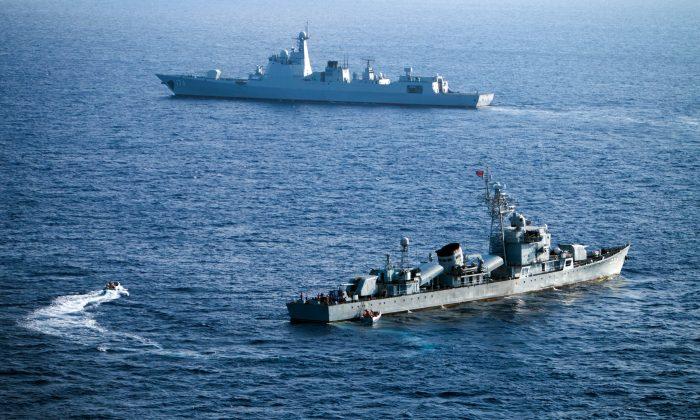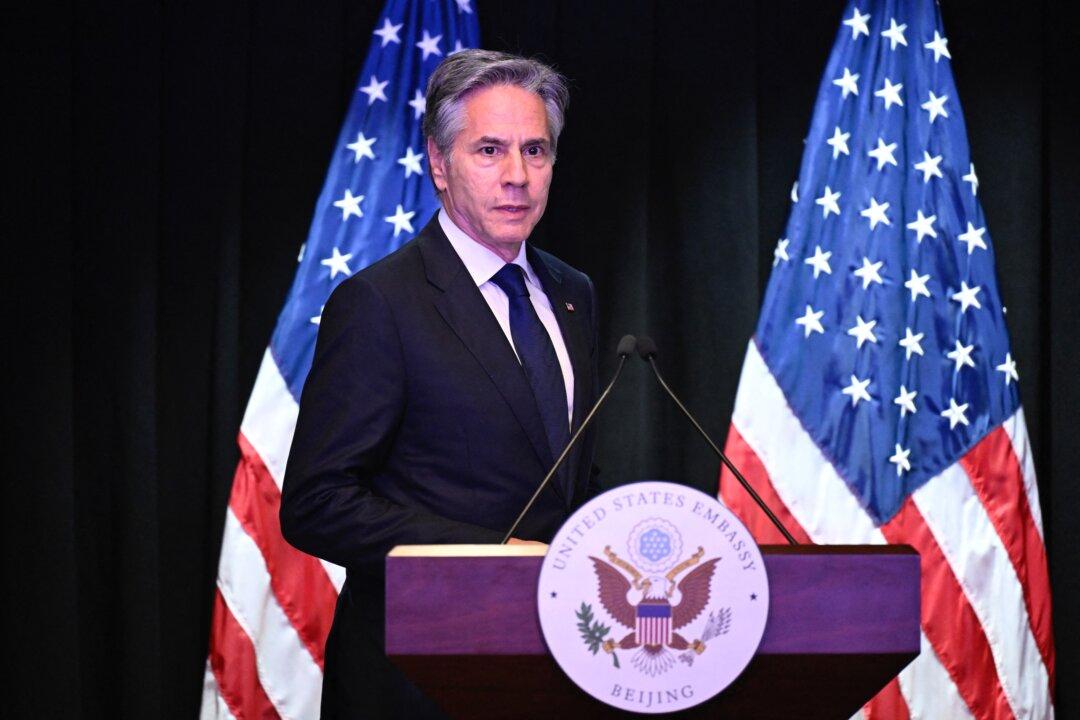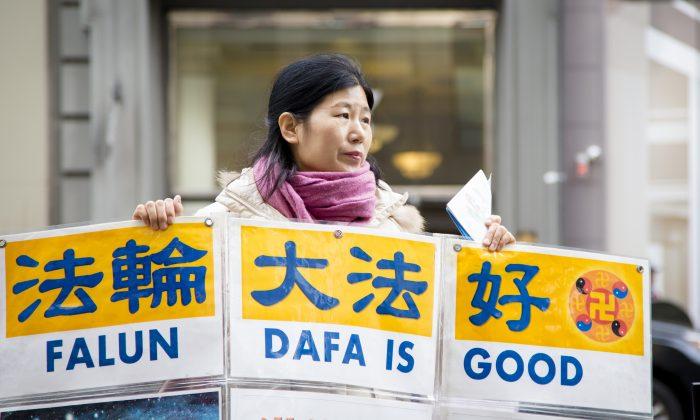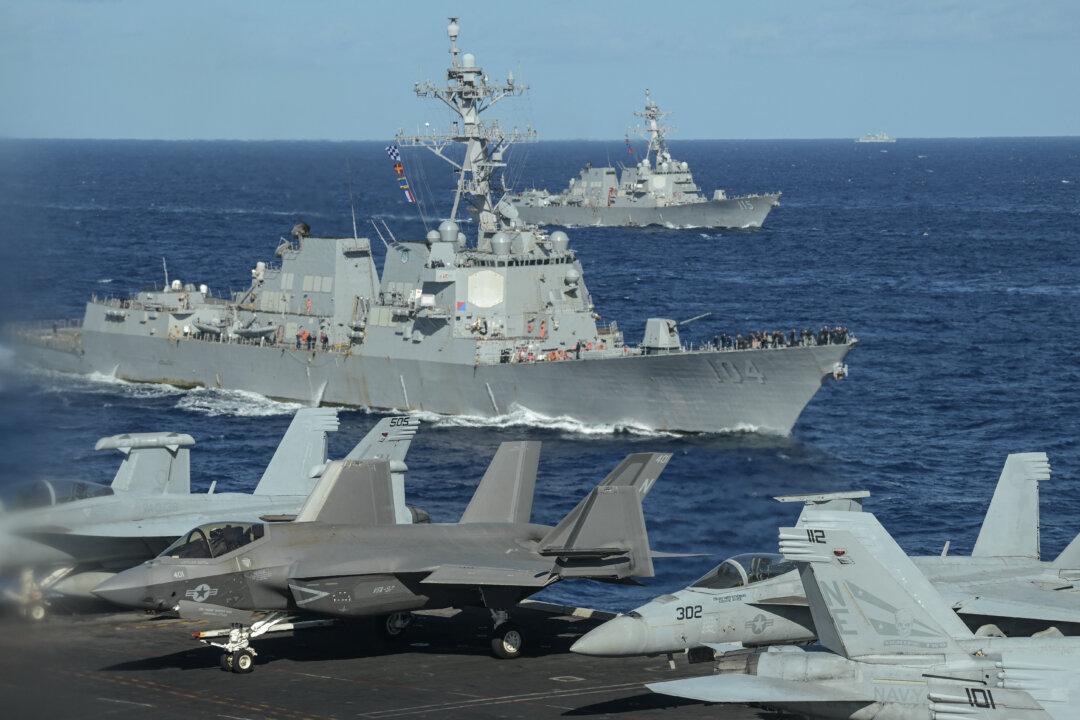Beijing’s recent testing of missiles in the South China Sea has intensified concerns over the Chinese military activities in the hotly contested waters.
The Pentagon on July 3 condemned the tests, saying it was a “disturbing” act that contradicted Chinese pledges not to militarize the region.
“Of course the Pentagon was aware of the Chinese missile launch from the man-made structures in the South China Sea near the Spratly Islands,” Pentagon spokesperson Lieutenant Colonel Dave Eastburn said in a statement.
“I’m not going to speak on behalf of all the sovereign nations in the region, but I’m sure they agree that the PRC’s (People’s Republic of China) behavior is contrary to its claim to want to bring peace to the region and obviously actions like this are coercive acts meant to intimidate other [South China Sea] claimants,” Eastburn added.
The relationship between Beijing and its neighbors has been rocky at times due to territorial disputes in the South China Sea. Besides China, the Philippines, Vietnam, Malaysia, Brunei, and Taiwan all have competing claims over islands, reefs, and rocks in the resource-rich waters.
To stake its claims over these features, the regime has increased its military presence in the region, including in the area surrounding the Spratly and Paracel Islands, where Beijing has constructed artificial islands equipped with naval and air bases.
China’s Foreign Ministry spokesperson Geng Shuang did not comment when asked about the U.S.’ claims during a regular press conference on July 2. Geng referred the reporter to ask the question to China’s defense ministry.
According to Reuters, Beijing said it was going to carry out drills between the Spratly and Paracel Islands from last weekend until July 3, and warned about entering this designated area.
The Philippines
In recent years, the United States has reaffirmed its commitment to strengthen its military presence in the Indo-Pacific region, and ensure freedom of navigation within its waters.“The U.S. Navy is exploring the viability of Subic Bay Hanjin Shipyard for use as a potential repair and maintenance facility,” said Commander Nate Christensen, deputy public affairs officer of the U.S. Pacific Fleet.
The shipyard located in Subic Bay, on the west coast of the Philippines’ largest island, opens to the South China Sea. Until 1992, the bay was home to one of the largest U.S. deepwater naval bases in the region.
According to Stars and Stripes, U.S. warships and Marines still make regular port calls to the bay.
Retired Navy Capt. Brian Buzzell, in a piece published in the U.S. Naval Institute’s monthly magazine Proceedings in June, said the opening presented a “golden chance” for the U.S. Navy to return to the bay.
The Navy’s return “would send a strong message to Beijing that, despite its efforts, the alliance between the United States and the Philippines is strong and unbreakable,” he said.
Cambodia
Cambodia was flagged in a recent Pentagon report on Indo-Pacific strategy as a country with whom the United States seeks to increase military cooperation.According to the report, the United States seeks engagement with Cambodia that “protects its sovereignty, promotes military professionalism, and helps it become a responsible and capable contributor to regional security,” despite the fact that the country suspended all joint exercises with the United States in 2017.
Felter wrote that the concerns arose after Cambodia abruptly announced in June that U.S. funds would no longer be needed for upgrades at the base, Nikkei reported. Cambodian officials had asked for the repairs in January when Felter toured the base in January, the outlet added.
Ream Naval Base is located south of Sihanoukville, a city that houses Cambodia’s only deepwater port. According to Nikkei, the water near Ream is deep enough to accommodate small patrol vessels.
Banh told Nikkei that he had received Felter’s letter, but denied that Cambodia was going to host Chinese military assets at the base.





